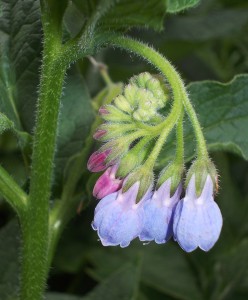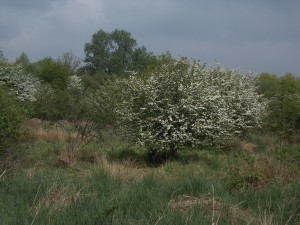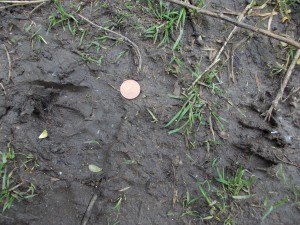I did wonder, before I began writing a nature journal here, whether half the entries wouldn’t be ‘nothing much to report today’. Well, so far I haven’t been there.
I went down to Wraysbury again in the hope of finding the Lesser Whitethroat. I arrived rather early, driving out of town only to see a gigantic queue of cars crawling in the other way, trying vainly to beat the Tube strike. No-one was about as I wrapped up in an extra pullover and listened intently to the morning chorus.
My day was already made when I actually SAW a Cetti’s Warbler – for about a second, before the rich brown bird with the rounded tail dived for cover. A Cormorant flapped heavily, taking off from the lake like a lumbering military transport, showing glossy blue-black plumage like a giant crow, circling three times to gain height. Two pairs of Gadwall (only one pair last time) swam shyly near the far side of the lake; Green Woodpeckers laughed their loud ringing call.

Blackcaps were singing all over; Song Thrushes too, at least three of them; a considerable flock of Long-Tailed Tits made their extraordinary “Tsrrrrrp” noise (try it); Chiffchaffs spoke their name, and (Common) Whitethroats sang their rasping songs or chattered from inside their thornbushes. Great clumps of Comfrey, the medicinal herb used in mediaeval times to knit bones, have suddenly sprung up with their dark, foxglove-like leaves and clusters of flowers in a range of anthocyanin colours – reds and violets.
There were more Willow Warblers and Garden Warblers, too, making them easier to find; more must be arriving each day now.

I made my way over the bridge and out into the dry scrubland. Whitethroats were all around now, singing competitively; a few Blackcaps joined in. Then, yes, I heard the simple, flat trill of a Lesser Whitethroat. I sat down and listened, heard it a few more times to make sure: it was a Seven Warbler Walk, I think actually my first, at least when I’ve taken the trouble to count them and write them down. I took a swig of water; an Orange Tip and a Brimstone butterfly flickered past.

Looking about the bushes carefully, I noticed a trail of Roe Deer prints, medium and small. Their numbers have been increasing steadily, certainly since 2007, and they are close to becoming a nuisance. About 350,000 are culled each year; another 74,000 or so are killed on the roads, without limiting their growth. Clearly we need some predators, though what our farmers would say to having Lynx back, let alone Wolverines, is easy to imagine. Where they are most numerous, woodland shrub vegetation and bird numbers are suffering.
On the way out, some Goldfinches sang near the road, and a Swallow flew overhead by the river Colne. I felt I’d had a good day, and braced myself for a tricky drive home. On a whim, I went via the airport road. It’s a bit slow but not uninteresting, and there’s a nice tunnel. Waiting at one of the sets of lights, I opened the window, and at once heard a Skylark singing its rippling song. I looked up, and there it was for a moment, a little flickering dark shape against the bright sky, pouring out its aerial music. The lights changed, and a jet growled in to land, the air whistling over its fully-extended flaps.
Fancy, a Skylark at Heathrow, seen and heard from a car, the highlight of a seven-warbler walk, Lesser Whitethroat and all.
